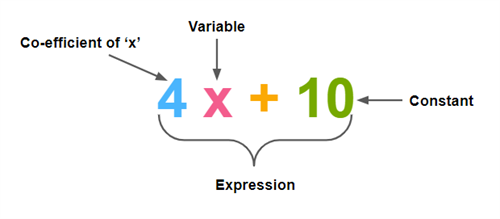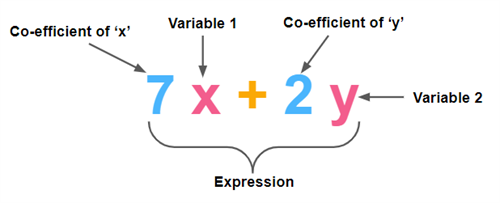
PUMPA - SMART LEARNING
எங்கள் ஆசிரியர்களுடன் 1-ஆன்-1 ஆலோசனை நேரத்தைப் பெறுங்கள். டாப்பர் ஆவதற்கு நாங்கள் பயிற்சி அளிப்போம்
Book Free DemoVariable:
A variable is a symbol that is undefined yet. A variable is something that keeps varying.
If 'x' is a variable, x can hold the value of any number.
Example:
If 'x' denotes the age of a person, then x can hold any value from 1, 2, 3... as age cannot be a negative number.
Co-efficient:
A co-efficient is a number used to multiply a variable.
The number multiplied read as being a co-efficient of a variable.
Example:
In 5p, 5 is the coefficient of 'p'.
Constant:
A constant is any whole number such as 0, 1, 2, 3,...
Expression:
We would have come across many expressions in mathematics such as 3 + 2, 6 - 4 and so on.
In algebra, such expressions are written using symbols.
An expression is a combination of variables and constants.
An algebraic expression can be both a combination of variables and constants or wholly variables.
Example:
2x + 3, 3x + 4y and so on.
Let us look at a few more expressions:
1. Consider 4x + 10:
4 is the co-efficient of 'x'.
x is the variable.
10 is the constant.
4x + 10 is altogether an expression.

2. Consider 7x + 2y.
7 is the co-efficient of 'x'.
2 is the co-efficient of 'y'.
'x' and 'y' are variable 1 and variable 2 respectively.
7x + 2y is altogether an expression.
